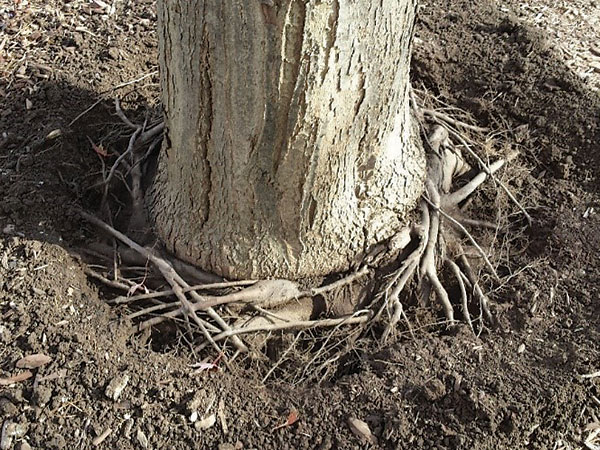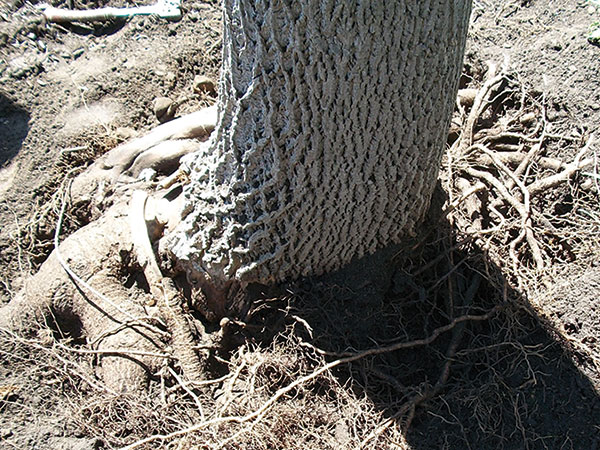Root Zone Excavation of Stem Girdling Roots
Stem girdling roots (SGR) can be a major issue to trees in the urban setting. SGR can greatly stunt the growth of or even kill a tree by reducing the flow of water and other nutrients to the upper canopy of the tree.
SIGNS AND SYMPTOMS
- Fewer or smaller leaves
- Thinning canopy
- Leaves have a lighter green color than normal or can have early fall color
- Branches may completely die
- Base of the tree may look flat from the roots “choking” the tree. Part of the base of the tree may bulge out due to the pressure the roots put on the trunk right below the surface
TREES MOST COMMONLY AFFECTED
- Maples (Norway Maple is most common)
- Lindens
- Magnolia
- Pines
CAUSES
- Planting containers that restrict root development
- Planting a tree in a hole that is too small for the tree being planted
- Planting the tree too deep
- Leaving the burlap and wire basket around the root ball after planting
- Creating a “Volcano” by adding too much mulch around the base of the tree
TREATMENT OPTIONS
- Removal of girdling roots can help the tree to recover from the damage they caused
- Removal of girdling roots is most commonly recommended for trees that are 2-10 years old because the roots have not become too large or established
- Removal of some girdling roots on older trees can be an effective treatment but if the roots become too established removal of the entire tree is more likely
TREATMENT PROCESS
- Step 1: Excavation of the soil around the trunk to make the root zone visible
- Step 2: Removal of girdling roots we identified (as possible)
- Step 3: Replace the soil with topsoil and mulch


